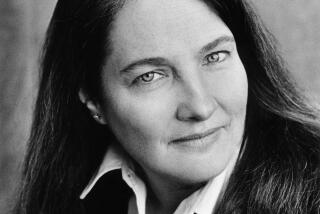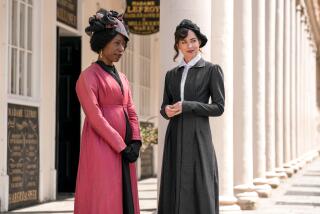BOOK REVIEW : Family Secrets in a British Country House : A DUBIOUS LEGACY, by Mary Wesley, Viking, $21; 271 pages
- Share via
Though her legions of British and American admirers have often likened her novels to those of Jane Austen, Mary Wesley’s eighth novel seems to have more in common with the works of the Bronte sisters. Though the rural settings, the meticulous dissection of upper-class manners and the concentration on the varieties of romantic experience invite the Austen comparison, the eeriness and the sense of mysterious menace lurking beneath the glossy surface provide another dimension entirely.
Here, in “A Dubious Legacy,” we have a gradually disintegrating country house with a decidedly strange wife confined to bed on an upper floor. Margaret Tillotson--beautiful, young, and a pathological liar--has voluntarily immured herself in her lavishly decorated bedroom, leaving her genial husband Henry to fend for himself. He seems to manage quite nicely with the aid of his Spanish housekeeper Pilar and her son Ebro, a widow and child rescued by Henry’s compassionate father from the Spanish Civil War.
Though Margaret has certainly given him an assortment of legal grounds for divorce ranging from lack of consortium to aggravated assault, Henry has apparently rejected this logical solution to the problem. Urbane and charming, he consoles himself on his frequent trips to London, though he’s discreet about the particulars.
Despite never leaving her room except to wreak occasional havoc with the household, Margaret remains exquisite--living proof that fresh air and exercise may be less essential than we think. Margaret seems to stay fit by means of rage and resentment.
Though we’re assured that there is nothing wrong with her physically, her mental state is never precisely defined. Whatever her complaint, it doesn’t affect her looks. Her decision to remain in bed is purely capricious.
After a decade of this bleak and solitary life, Henry Tillotson decides to have a summer dinner party. The year is 1954, and the house guests include two young couples; James and Barbara; Matthew and Antonia. The chaps are exceedingly stuffy; the girls quite giddy, but over the weekend both pairs decide to marry.
In the course of this event, gentle irony is replaced by ominous allusion. Consumed with curiosity, the two young women boldly invade Margaret Tillotson’s shrine. Once inside, they’re dazzled by an entirely gold environment; a gilded bed, glittering satin sheets; carpet, curtains, upholstery and wallpaper to match; all the more amazing in contrast to the shabby gentility of the rest of Cotteshaw. The gold room, Margaret informs them, is the result of her latest experiment in interior decoration.
They had hoped to learn more, but their only real discovery is that Henry and Margaret were married in Egypt. Towards the end of the dinner party, Margaret makes an unscheduled and highly theatrical appearance, a horrific scene that completely shatters the fragile illusion of normality that has prevailed until now.
Part III carries us forward to 1958. The young people are married and Antonia and Matthew are parents.
The two couples have made an arrangement with Henry to lease rooms in the vast house for holidays, a mutually beneficial decision. The situation between Henry and Margaret remains status quo, though for the first time, we’re offered some tantalizing clues about their past.
Part IV, a year later, shows Margaret at her worst, creating an incident that barely misses ending in true tragedy. Despite the hints, she remains as enigmatic as ever, and considerably more frightening.
By Part V, we’re been whisked ahead to 1990, by which time all the central and incidental characters are considerably older, sadder and wiser.
The reader is finally enlightened about Margaret and Henry, although her behavior remains as inexplicable as ever. Though Margaret never become completely comprehensible, she has functioned effectively as the linchpin of a novel with far more depth and nuance than might be suspected from the deceptively innocuous opening.
More to Read
Sign up for our Book Club newsletter
Get the latest news, events and more from the Los Angeles Times Book Club, and help us get L.A. reading and talking.
You may occasionally receive promotional content from the Los Angeles Times.







